|
Michael McFadyen's Scuba Diving - Manta Bowl
The prime attraction in the Ticao Island/Donsol area is diving and snorkelling with whale sharks. All the diving, and I presume most of the snorkelling, is done at a site called Manta Bowl. This is located in Ticao Pass between Luzon and Ticao Island, about half way between both. The bottom of the pass is apparently over 200 metres and here it comes up to about 12 metres at its shallowest point, with most being between 20 and 24 metres it seems.
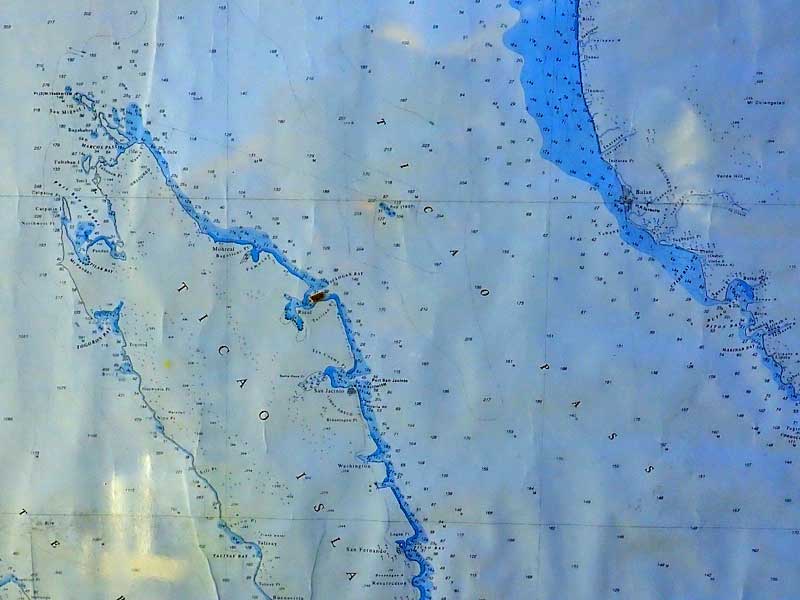 | 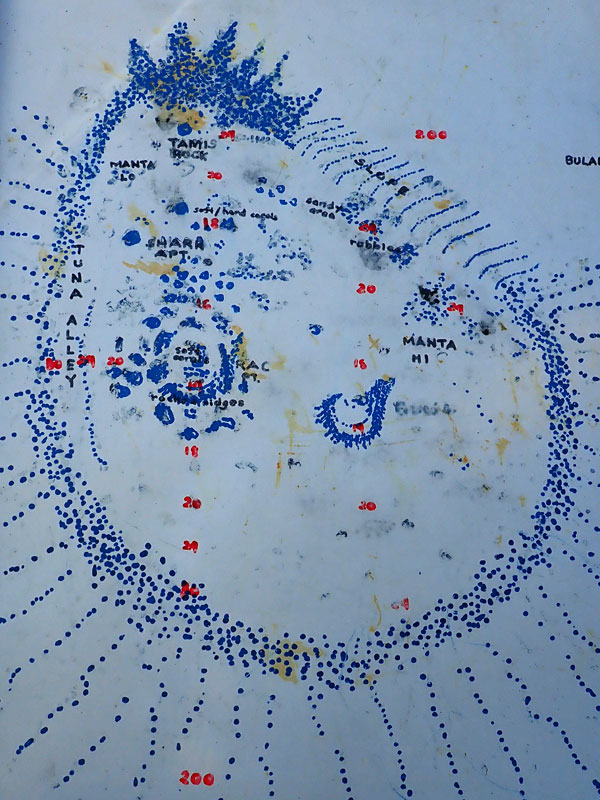 |
| Manta Bowl is located near the second S of PASS. Ticao Island Resort is near bottom right of island. | A diagram of the Manta Bowl. Top of map is NW. Enter water near
red 20, drift as you sink over the main middle reef and hook
in near Tamis Rock at top |
As you can see from the above chart and diagram, Manta Bowl is right out in the middle of the pass and well away from land. It is about 30 minutes run from Ticao Island Resort and perhaps 90 minutes from Donsol via fast banca. The current here runs from the south to north roughly. It can run very strongly but can also drop off. When I dived it, the first dives were a few days after the full moon and the current was very strong. However, on later days it got less.
What happens is that the dive boat drops an anchor and buoy on the top of the reef. They then go up current and you drop off the boat and descend immediately. When you hit the bottom you head north-west and sometimes go up over the shallow section of the reef (which looks like it would be a great dive site). On the way look out as we saw some manta rays on the way and also some sharks (black and white-tipped reef sharks). Eventually you end up in 20 to 24 metres, depending on tide and location.
 |
| Manta Bowl cross-section. You enter towards the right and hook in towards left. |
Along the way you see lots of rope and fishing nets. Some of these have obviously been lost by fishers, but some appear to have been put there by the dive operators as they are small ropes hooked around coral outcrops and with loops in the ends. Once at the specified spot, you hook in using a reef hook. Once I hooked into coral and another time one of the loop sections of rope.
Then you wait and look. Most whale sharks seem to come from behind you, that is, heading into the current. You need to look left, right, behind and up. You stay here till you see a whale shark (or manta ray) or move to another spot.
 |  |
| A manta ray which appeared while we were waiting for whale sharks | It came pretty close, the best encounter we had |
The visibility here can vary quite a lot, even on the same dive. We had viz ranging from 10 metres to over 30 metres. Even at the same depth it can vary a lot. Also, the water temperature here is colder than at the dive sites at the northern end of Ticao Island. We averaged between 24.0 and 25.0 in March.
We had a lot more luck with whale sharks, seeing at least one on every dive except the first one (I did eighth dives here in six days). Our best encounter was either three or four, with other days up to three. As I mentioned, the sharks come in from behind most times, but sometimes they do come with the current. When there is a strong current, you cannot really swim towards them as you will soon be swept away from your group.
 | 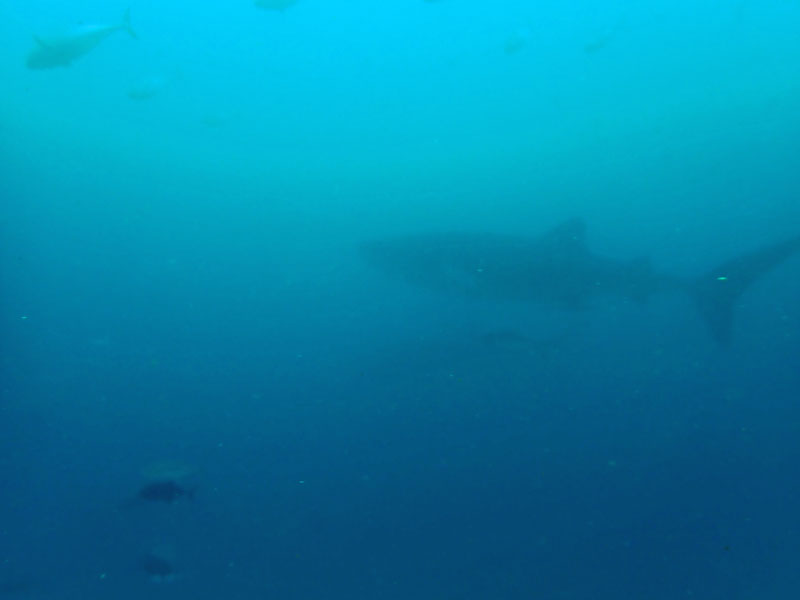 |
| One of the first whale sharks I saw at Manta Bowl. | Another photo of this whale shark. |
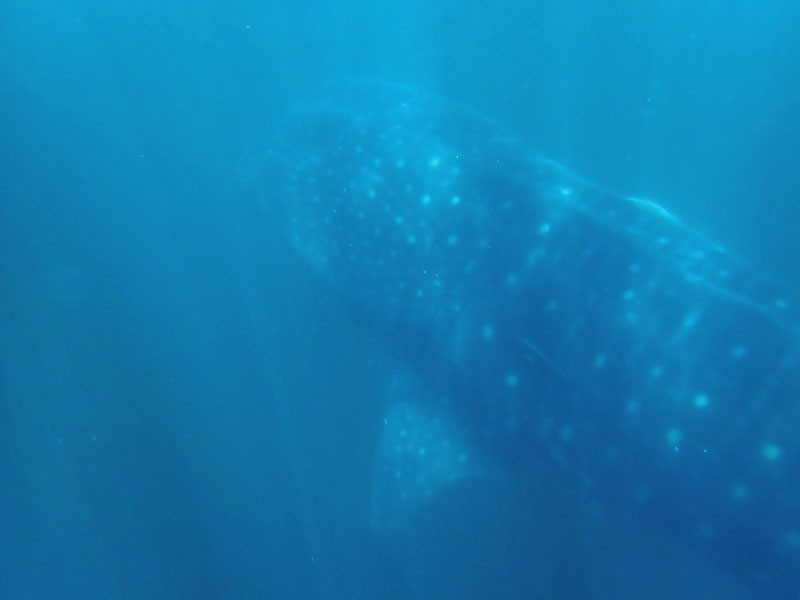 | 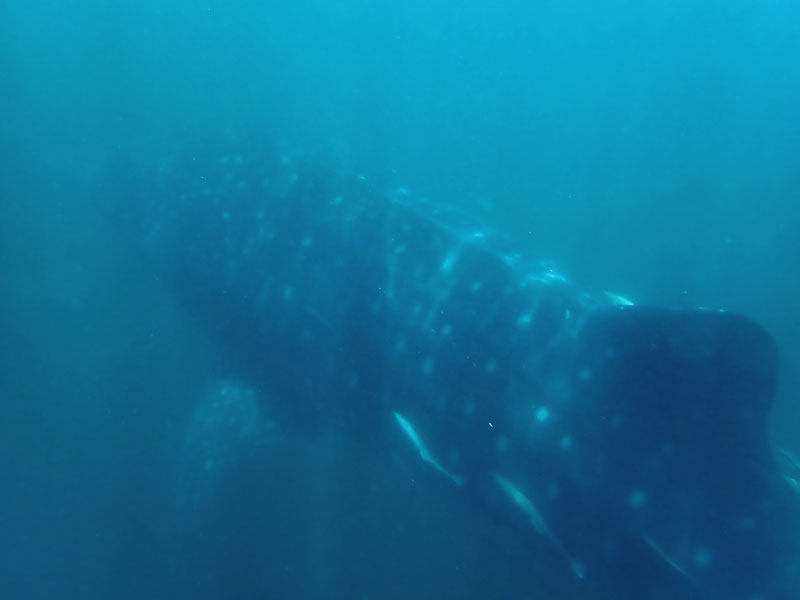 |
| One of the whale sharks I snorkelled with at Manta Bowl. | Another photo of this whale shark. |
On the later days when there was little or almost no current, when we sighted a shark we swam towards it. I was in a group of seven, including the divemaster, and sometimes they would see it clearly but all I saw was a shadow as we were spread out a little so as to not crowd each other. Also, sometimes their exhalations would get in the way of good views or photos.
After or before the dives, we sometimes saw whale sharks on the surface. The most obvious way they were sighted was when small bait fish stirred up the surface when chased by large pelagic fish and the whale sharks. We once saw about four or more at the one time. I snorkelled with a couple, having one really good encounter s per the photos above. Others in our group had one come towards them when they were in the water on our banca's outrigger and it swam between the hull and them, actually touching them.
 |  |
| My best encounter with a whale sharks at Manta Bowl. | It moves past me |
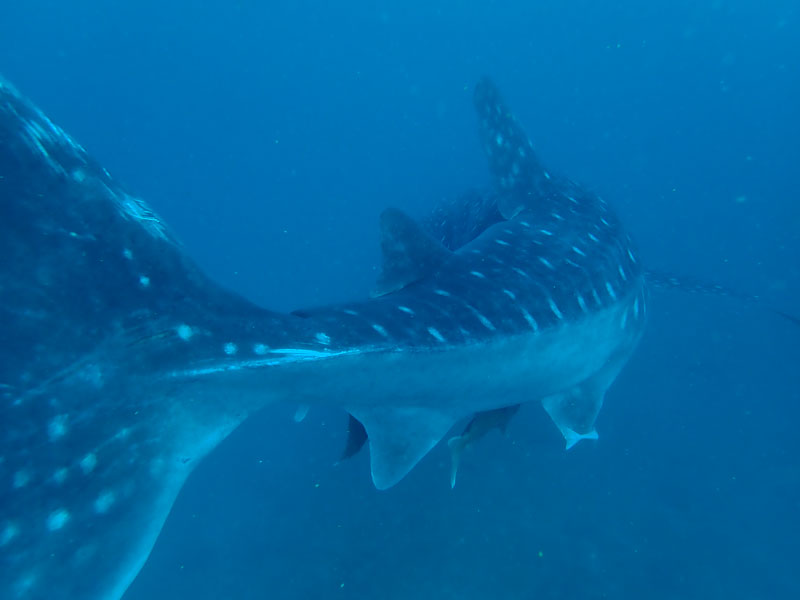 |  |
| A tail-end view of the whale shark. | And it turns around and encounters another whale shark.
I actually got video of these two and another one in the same frame. |
When the current died down, we actually did not go to the bottom, we swam along at about 12 to 14 metres. Once we got to the normal spot, we hovered over it. A slight kick every now and then kept us in place. On our very last dive of the trip, we had our best encounter. A large whale shark came in from down current and came right towards me. It turned and went past only a metre away. It then turned to its left and came back. At this time it encountered another shark heading to my left and turned to its right as one more came over the top of the second one in the opposite direction. WOW!!
I got all this encounter on video and will post a link to this page later.
We also had another great encounter when two came very close. I got some great photos (see bottom ones) and video as well. I may put this up too.
 |  |
| Another good encounter with a whale shark at Manta Bowl. | Check out the size compared to the diver. |
Due to the depth and current, this is a dive for experienced divers only. Of course you can snorkel if you don't dive or are inexperienced. Bottom times are severely limited, especially if you have to sit on the bottom. Using my computer running Buhlmann GF 30/85 I hit zero minutes no deco time at about 27 minutes. Heavy users of air will also have to carefully watch their gauges.
A brilliant experience, the best individual marine wildlife encounter I have had in almost 30 years and the second best ever (best was a southern right whale). Highly recommended.
Click here to return to the Ticao Island dive list.
| 
 v6.00.307 © 2003-2005
v6.00.307 © 2003-2005